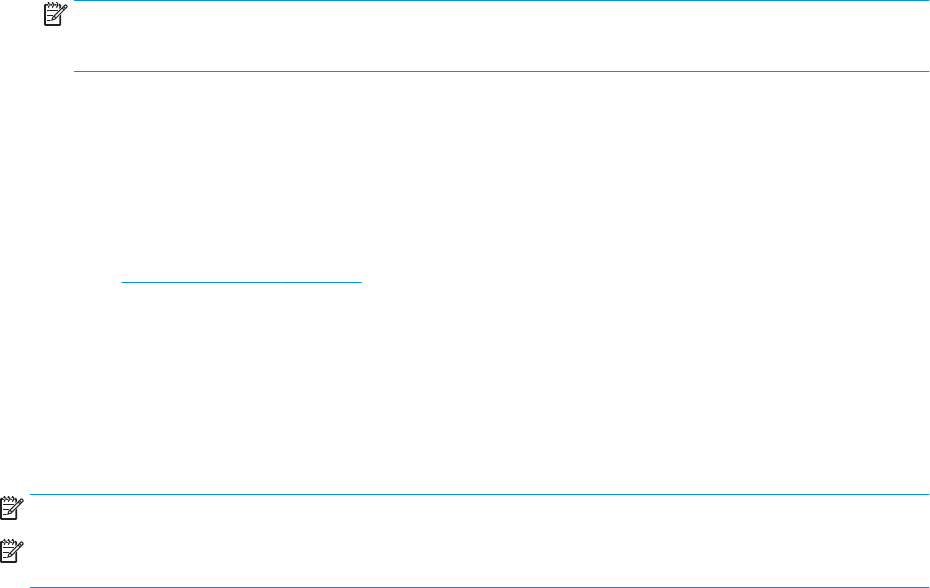HP Sure Recover User Guide
Table Of Contents
- Getting started
- Creating a corporate image
- Using the HP Sure Recover Agent Within a Corporate Firewall
- Working with the HP Client Management Script Library (CMSL)
- Troubleshooting

NOTE: <U:> refers to the USB drive. Replace with the correct drive letter.
Edit the “my-image” part of le name, and the <my-image> description, as needed.
dism /Capture-Image /ImageFile:<U:><\my-image>.wim /CaptureDir:C:\ /
Name:<My Image>
4. Copy the image from USB to the staging area on your working system using the following command:
robocopy <U:>\ C:\staging <my-image>.wim
You should have the following image le: C:\staging\my-image.wim.
5. Go to Splitting the image on page 6.
Splitting the image
HP recommends that you split the image into smaller les to improve reliability of network downloads, using
the following command:
dism /Split-Image /ImageFile:C:\staging\<my-image>.wim /SwmFile:C:\staging
\<my-image>.swm /FileSize:64
NOTE: FileSize is shown in megabytes. Edit as necessary.
NOTE: Because of the nature of DISM's split algorithm, the sizes of the generated SWM les might be either
smaller or larger than the stated le size.
Creating a manifest
Format manifest les as UTF-8 without Byte Order Mark (BOM).
You can change the manifest le name (custom.mft) used in the following procedures, but you must not
change the extensions .mft and .sig, and the le name portion of the manifest and signature les must
match. For example, you can change the pair (custom.mft, custom.sig) to (myimage.mft, myimage.sig).
mft_version is used to determine the format of the image le and must currently be set to 1.
image_version is used to determine if a newer version of the image is available and to prevent older
versions from being installed.
Both values must be unsigned 16-bit integers, and the line separator in the manifest must be ‘\r\n’ (CR
+ LF).
Generating a manifest
Because several les might be involved with your split image, use a powershell script to generate a manifest.
In all remaining steps, you must be in the C:\staging folder.
CD /D C:\staging
1. Create a powershell script using an editor that can produce a text le in format UTF-8 without BOM,
using the following command: notepad C:\staging\generate-manifest.ps1
Create the following script:
$mftFilename = "custom.mft"
$imageVersion = 1907 (Note: This can be any 16-bit integer)
6 Chapter 2 Creating a corporate image










